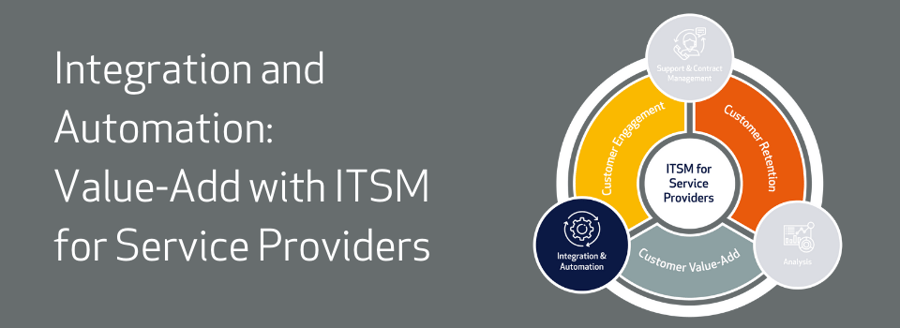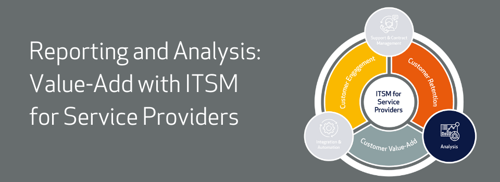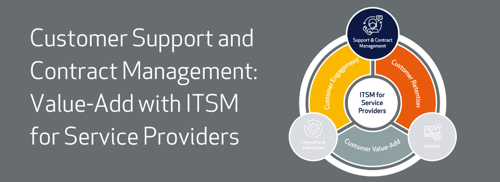Probably since the Ancient Greeks, “can I get a report on this?” has been a commonly heard request from management, customers, sales, marketing and all, regardless of the business in hand – after all, there have always been dissatisfied customers…
Blog
Integration and Automation – value for Service Providers
14 Dec 2021

For a Service Provider, managing potentially thousands of customers, each with possibly several contracts – all with different start-end dates, and with multiple SLAs in place – is a support nightmare.
Remember, every customer thinks they are “the special one”. So, taking a manual approach to that support nightmare is simply not realistic. It’s not just time that is the enemy, but pressure leads to human error – just watch any MasterChef episode… The answer lies with automation – this is not simply a buzzword here, it’s an absolute. It begins with basics such as automated emails and messaging in direct response to any incident, but goes much further than this on the Sunrise platform. It actually goes beyond the platform, as key to successful automation of processes is the ability to integrate with a customer’s own 3rd party applications, such that there are no gaps in the chain of events. For this reason, Sunrise’s automation also extends to supporting REST APIs for inbound and outbound integration with other applications.
The Sunrise platform is built around a process and workflow engine that allows a Service Provider to configure process chains using a Visio style view in the graphical process builder – no programming required! Once built, you can then automate any desired process within the application. All service management disciplines are covered, such as automation around customer incidents and requests, or against any problems or changes an MSP may be dealing with, within the application. Here’s an example: the Sunrise platform is raising an incident for a customer; that customer contract needs to be put on hold (for example, because they haven’t paid a bill or a contract has ended) so not only does that incident need to be logged, but Sunrise but will then automatically put the incident on hold with all the relevant details and history as to why it has been put on hold. So, any member of admin can immediately see and understand the situation. That saves a lot of phone calls and email exchanges…
The system will also automatically email the account manager with details of the incident and the customer in question. In turn, they can then liaise with the service desk and deal with the issue as appropriate. Importantly, this means that it not only saves time and effort (meaning costs) but ensures that policies and procedures are always followed which, in turn, means consistent interaction with the customers. Nothing annoys a customer more than inconsistent support and management; for an MSP, it can mean the difference between contract renewal or losing that customer forever.
We’ve already mentioned the importance of integration with 3rd party applications, and here’s an example of that working in practice: an incident is logged within a service management tool on behalf of a customer, but the service desk team is unable to resolve it. The answer is for the Sunrise system to log it as a development tool issue for the developers to work on directly. In this instance, the Sunrise platform will make an outbound call using the API directly to the development tool in question. The development tool acknowledges it and provides a reference number for the ticket that has been logged within that tool. At this point we now have a true, bidirectional integration going forward with all relevant data between automatically shared between the two applications. This integration extends to being able to see the current status of this record within the other tool.
A common example of integration is between customer data and their chosen CRM application; it means that the two systems stay fully synchronised so there is always a single version of the truth, and a single dataset in use. This is invaluable for fast problem resolution. Another common integration example – again designed to fully synchronise customer management – is integration with 24×7 business applications such as MS Tools. For example, this might be adding an appointment to someone’s calendar on MS Graph, directly from Sunrise using the API. Admin simply has to enter the details in Sunrise and it automatically adds it to the external calendar application. A pertinent example of this over the past 18 months has been direct integration with MS Teams for conference management.
It’s all about increasing efficiency, which means happier customers and bigger profits. Automation and integration perform an invaluable role in achieving these goals.
Watch the demo video of integration and automation for Service Providers
Related Posts
Blog
For an IT Service Provider, as if winning a customer in the first place isn’t hard enough in what is a devilishly competitive marketspace, then holding onto them can prove even harder, as other MSPs try to tempt them away.
.png)



